Russet iron, one-piece construction with decorative grooves.

73.9 cm / 29 inch
61.5 cm / 24.2 inch
T section forte 12.5 mm
T section middle 10 mm
T section near tip 6 mm
forte 8 mm
middle 5 mm
near tip 2.5 mm
forte 56 mm
840 grams
Khyber region, Afghanistan / North India
Wootz steel, iron, ivory, gold, wood, leather, brass
The sword of the tribes living in and near the Khyber pass. This pass goes through the Spin Ghar mountans, from Afghanistan to Pakistan, connecting Central Asia with the Indian subcontinent. An integral part of the ancient Silk Road trade route, and of great strategic importance. The pass was used for invasions by no less than Alexander the Great, the Mongol Horde, and more recently, Ranjit Singh.
The region is inhabited by Pashtun tribes such as Afridis and Shinwari. Most villages in the pass are Afridis, regarded by the British as "warlike people". The Shinwari offered "protection" to travellers for a fee.
Locally the weapon was known as charas, charay or churra. Lord Egerton and George Stone both give the alternative name salawar yatağan in their books.1 This is probably a Western term based on the Ottoman yatağan whose blade bears some resemblance to the Khyber sword. Salawar probably derives off the word salwar, referring to a traditional outfit of South Asia, worn also by the Pashtun tribes.
Khyber swords are typically wide-bladed weapons, with T-shaped cross-section, tapering to an acute point. The wide base of the blade functions as a hand guard. Part of the handle disappears in the scabbard, much like the Caucasian shashka or Indo-Persian kard daggers. Some are large knives, while others are of sword size. The earlier forms have a gently recurved shape, such as this one. Although they look like thrusting weapons, and with their T-cross-section, they seem well capable of piercing armor, British forces fighting against them in the 19th century noted they were primarily used for delivering heavy cuts.
Most Khyber swords are of tribal workmanship and finish, with relatively simple steel blades of mediocre workmanship. The very best were executed in dark Persian wootz steel, with gold koftgari, such as the one that is subject of this article. Lord Egerton had a Khyber sword with a similar dark blade that he described as "Kara Khorassan blade. Peshawur." "Kara" means black and Khorassan is a region in present-day Iran, where the famous dark Persian wootz came from. Peshawar is on the Pakistani side of the Khyber pass. He further mentions that Ch'urrá were made in Khorassan, Kabul, and Jellalabad.
Khyber swords were sometimes worn by Punjabi, and some may have been made in north India.2 Sikhs from Punjab did occupy the Khyber pass from 1798 up to the annexation of Punjab by the British in 1849.
1. See: Egerton. An Illustrated Handbook of Indian Arms, London, 1880. Page 144.
Stone: A Glossary of the Construction, Decoration and Use of Arms and armor, 1934. Reprint by Dover, 1999, p. 354.
2. See: Egerton. An Illustrated Handbook of Indian Arms, London, 1880. Page 144.
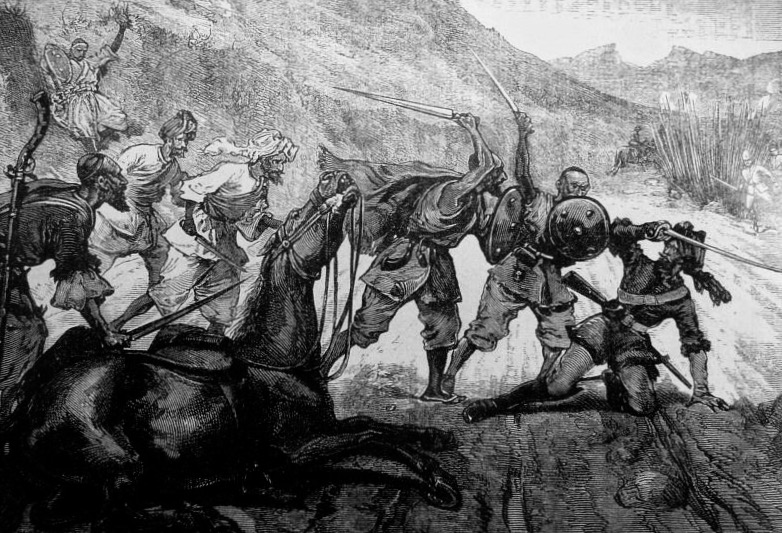
Khyber tribesmen attacking Indian Sepoys of the British army with their Khyber swords.
This example
Presented is a large and very fine example of a Khyber sword, probably from the 18th century. Its massive blade of dark Persian wootz steel called kara taban or "brilliant black", a high contrast pattern in shades of silver to near black. Blade with pronounced features like the T shaped spine and elegantly recurved shape. The back of its spine is chiseled with ridge line and decorative motifs. Blade in original, untouched finish. Near perfect condition, save for some very minor edge damage. Handle and bolsters with golden koftgari work, partly faded over time.
The scabbard is old but not original to the piece because it doesn't accommodate enough of the hilt or the base of the blade. Covered with morocco grained leather, in sound condition except tearing at the mouthpiece. The silver chape with chased and chiseled decor is missing its finial. Otherwise, the scabbard is of good quality and condition, and of the period.
Conclusion
A large and impressive example of a Khyber sword, of the highly sought-after black wootz. A quality example rarely encountered on the market.
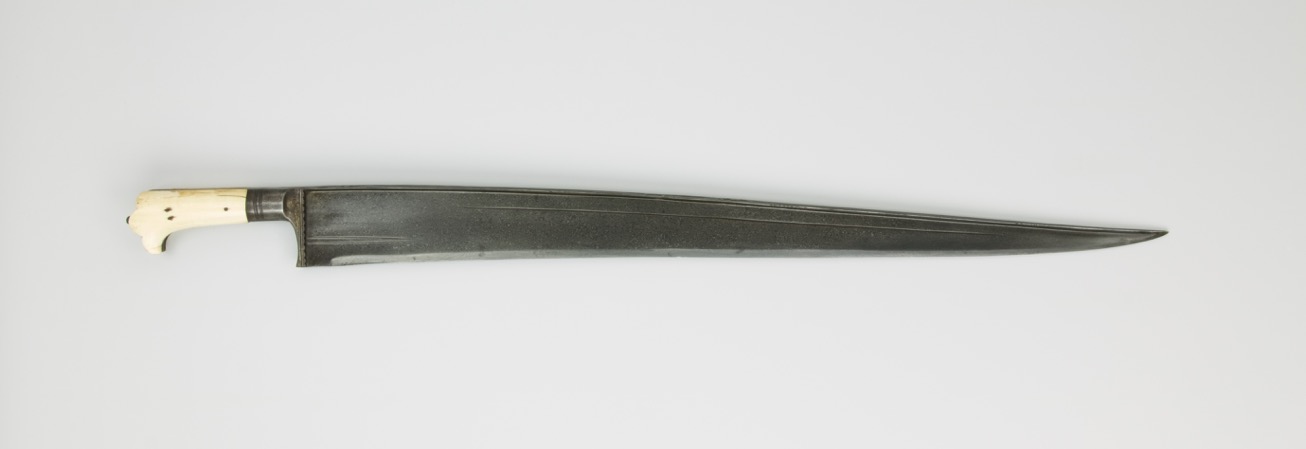
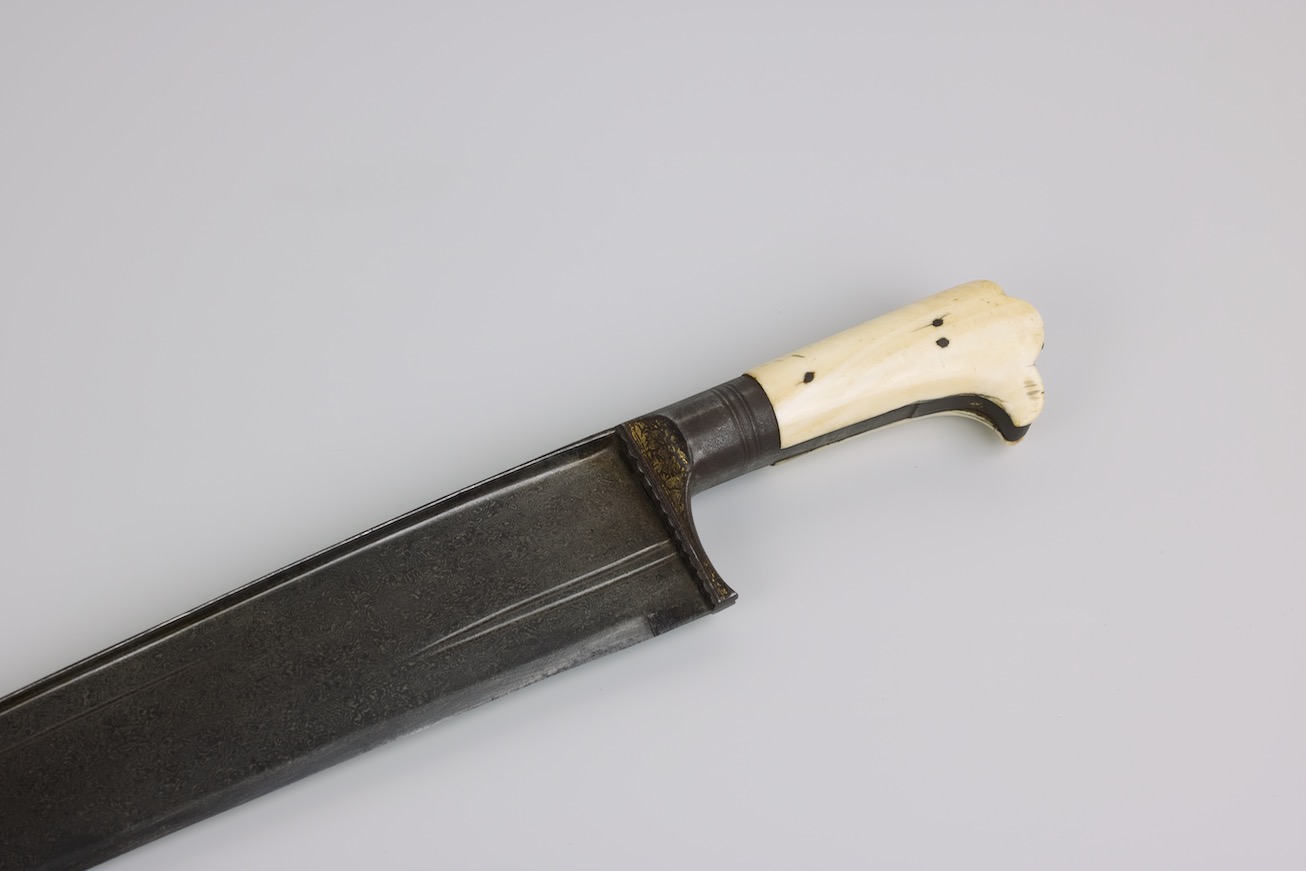
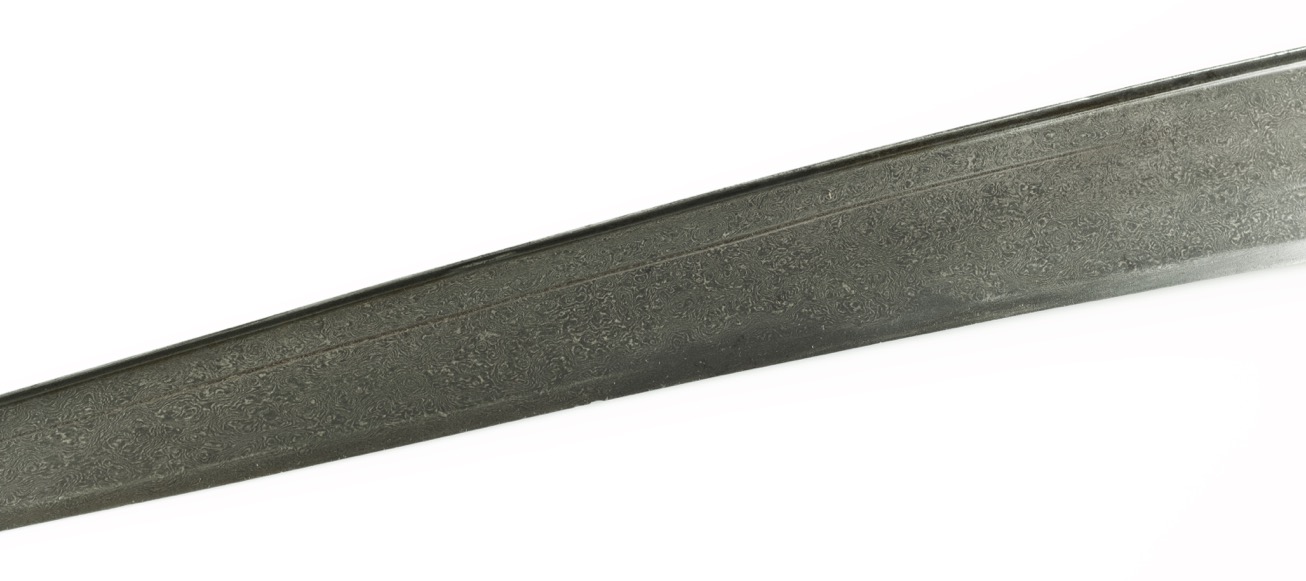


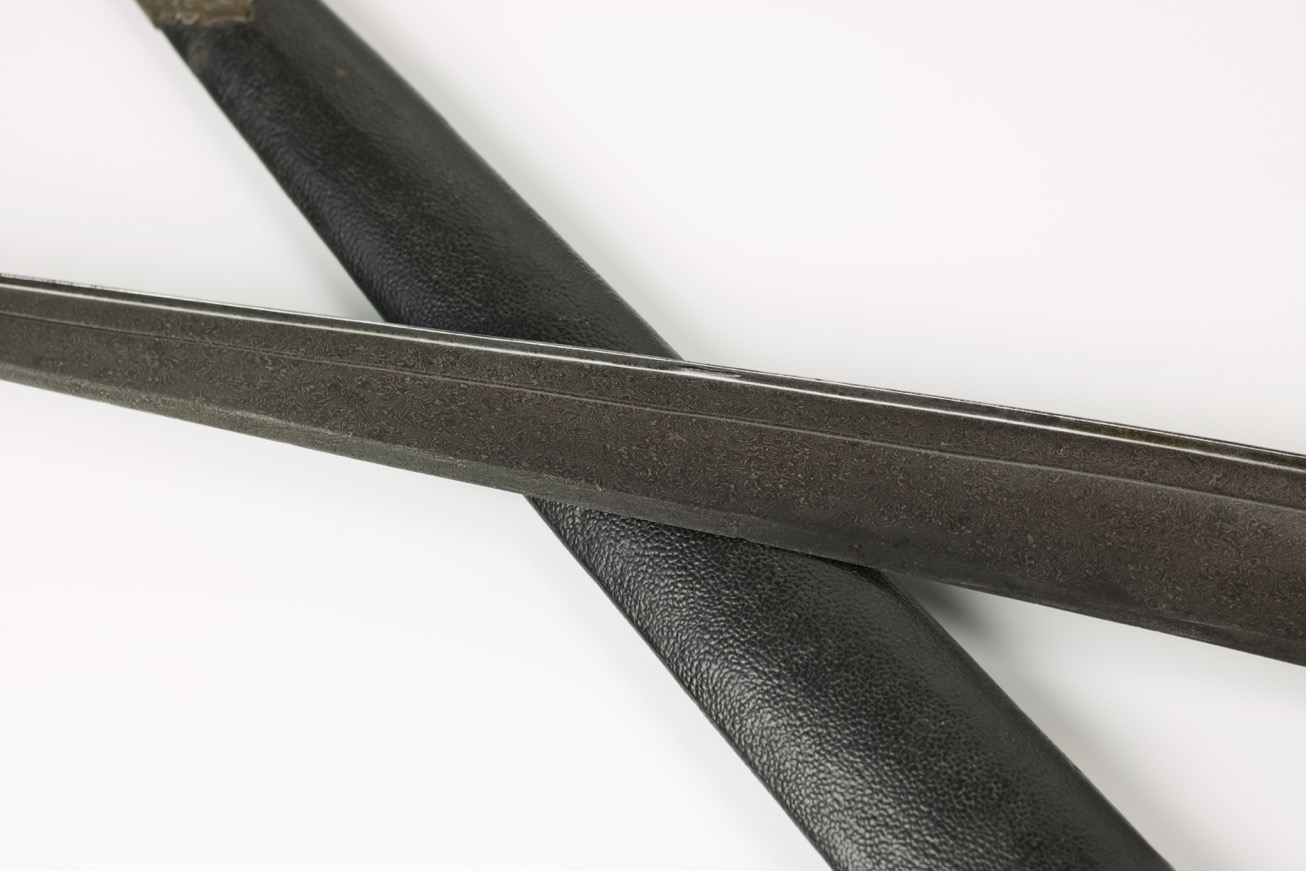

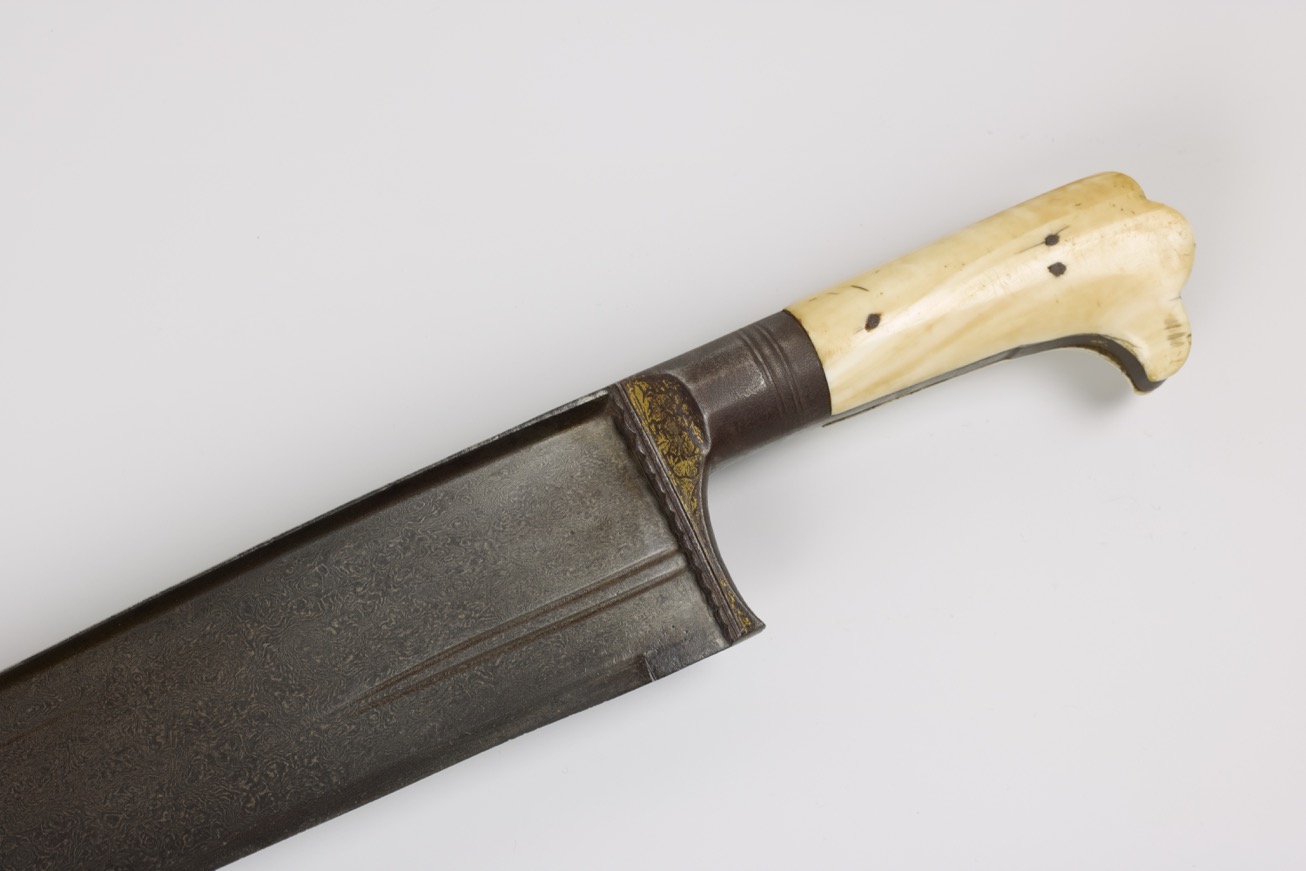

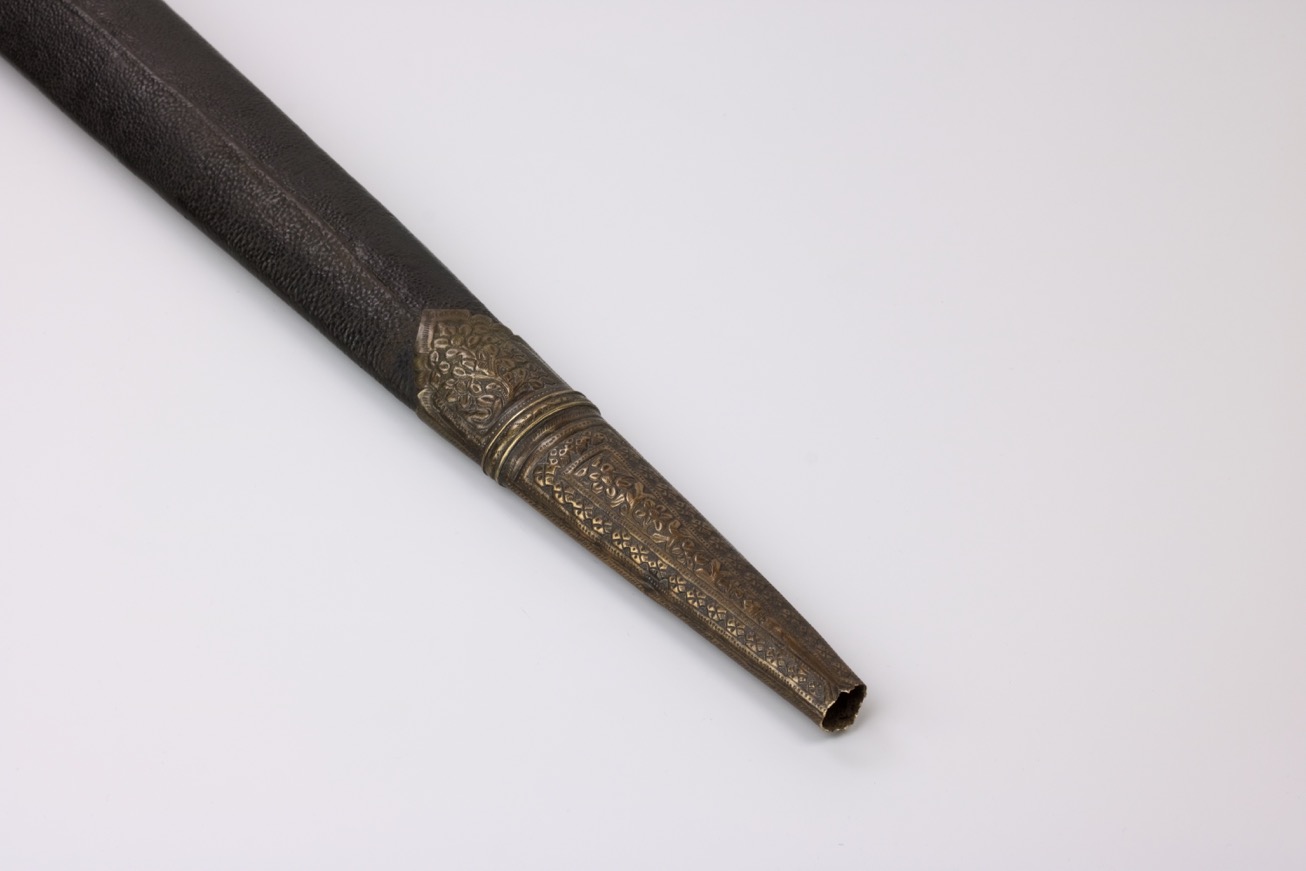
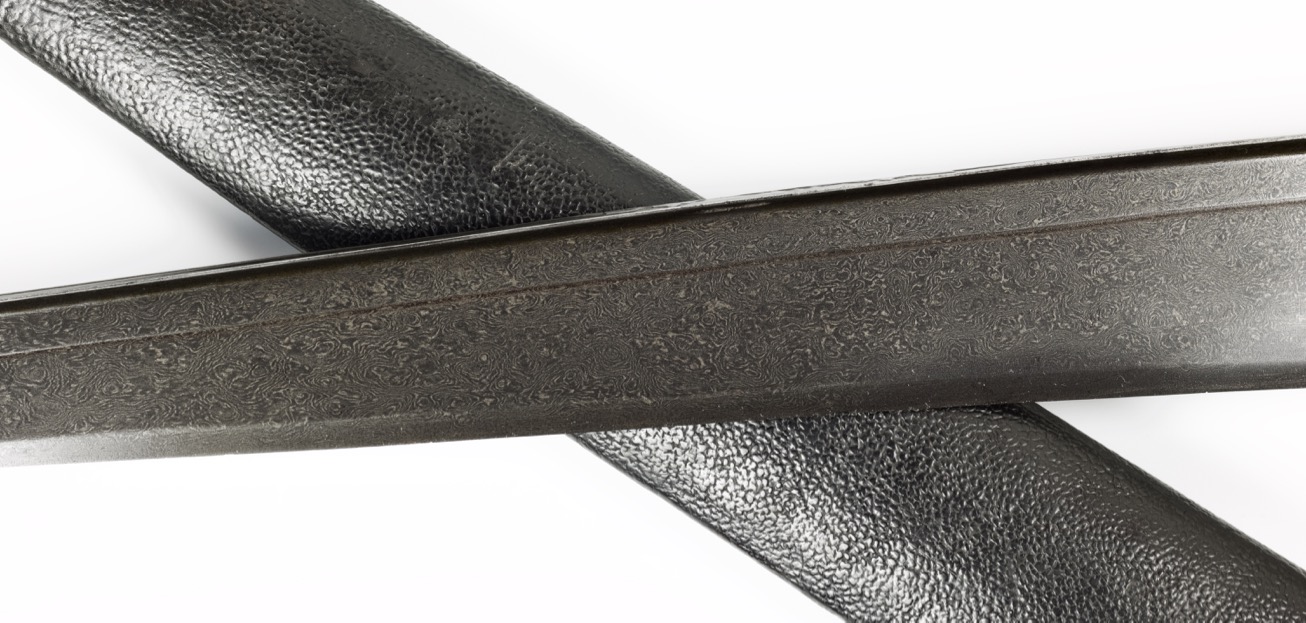

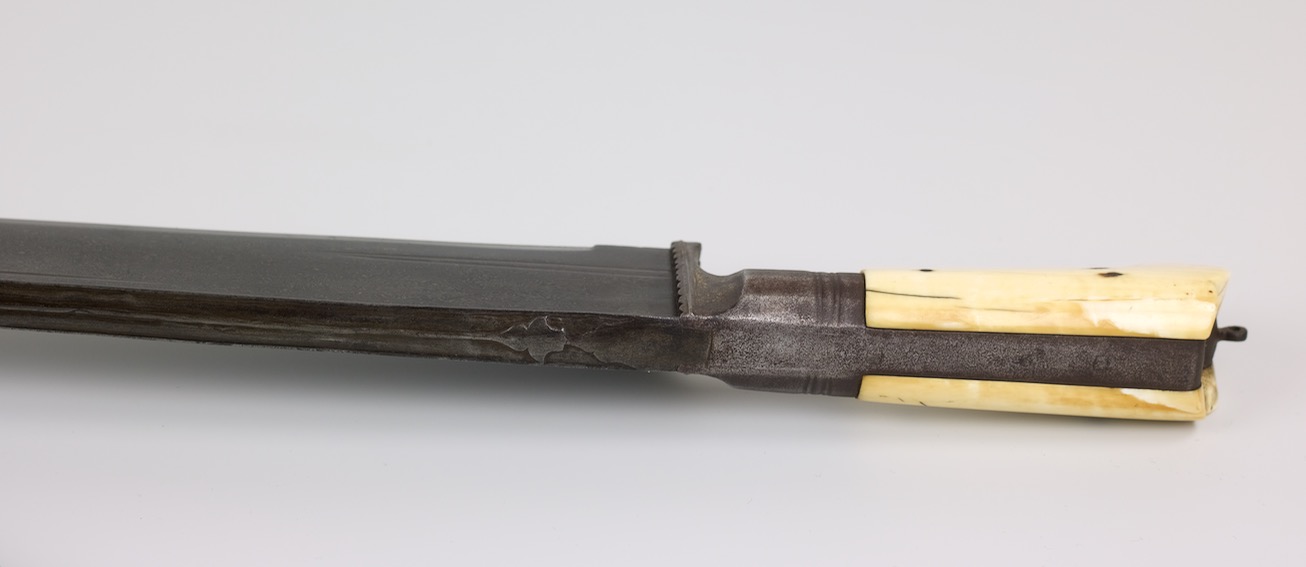


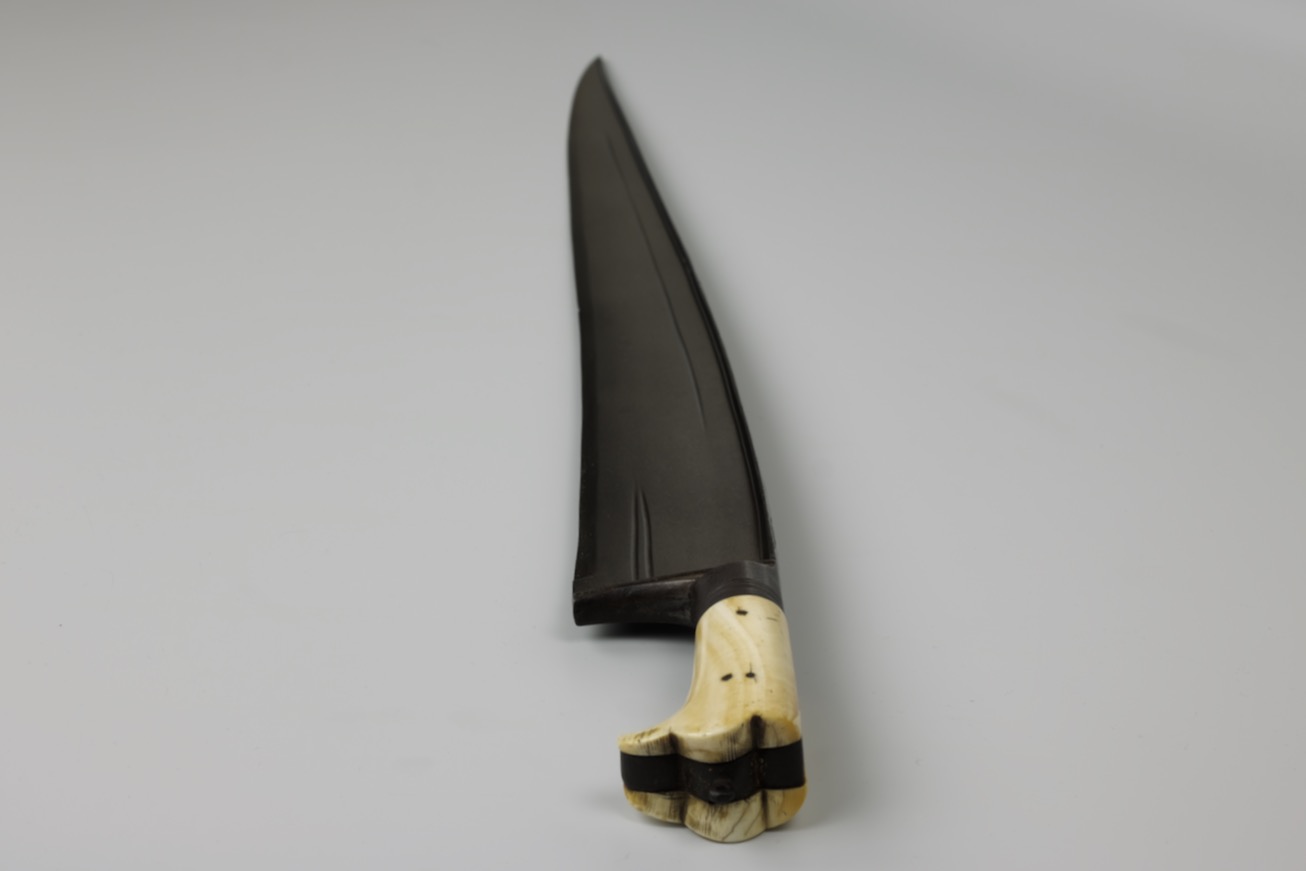


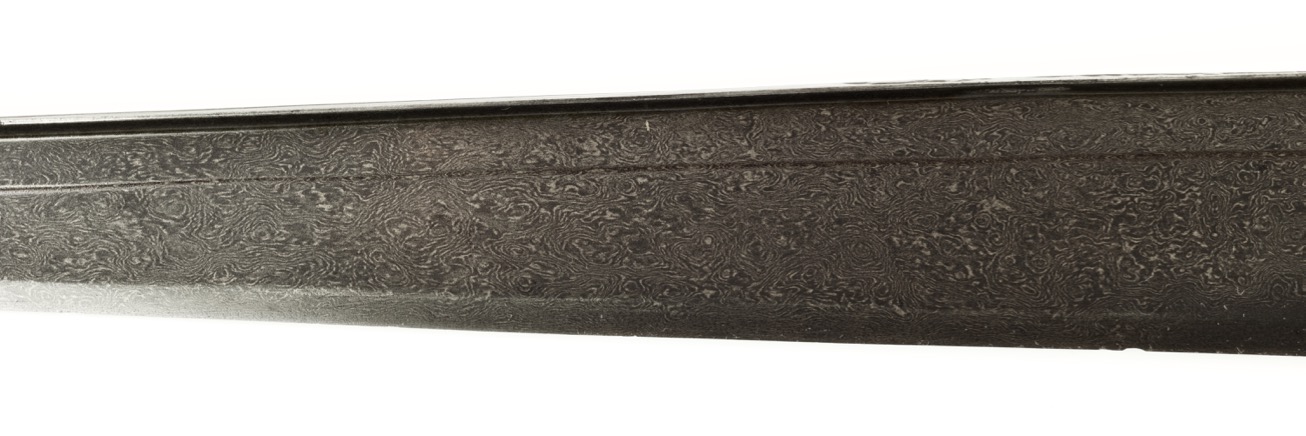
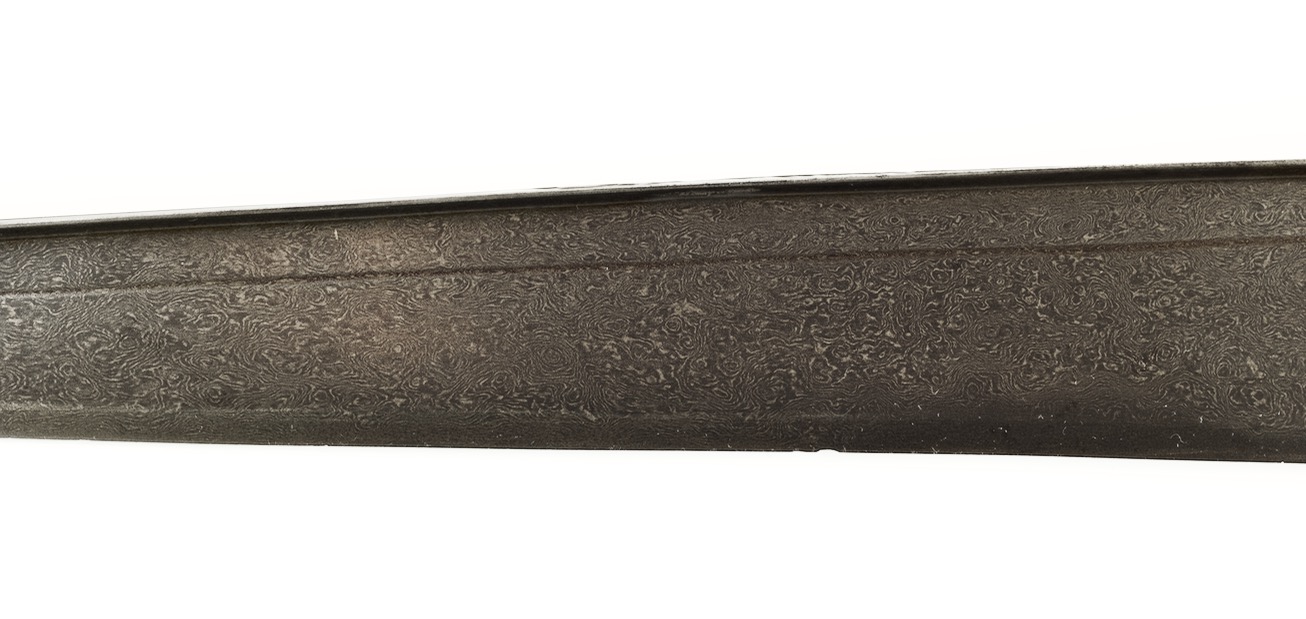
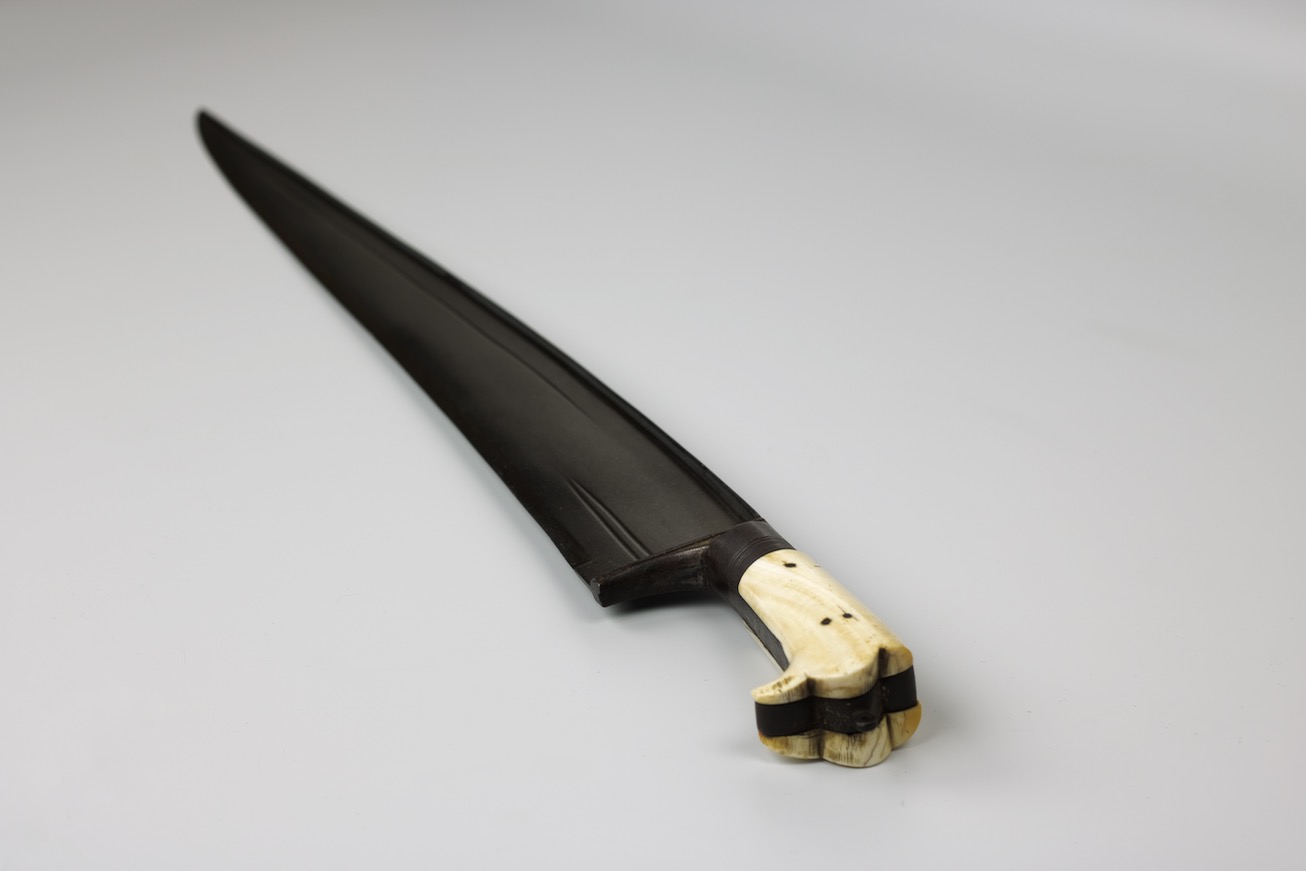


With a very fine Nepalese blade, but kard-like hilt and scabbard.
Early type with very shallow notch in the blade and little flare in the pommel.
The pierced silver mounts with parcel gilding and red velvet backing.






